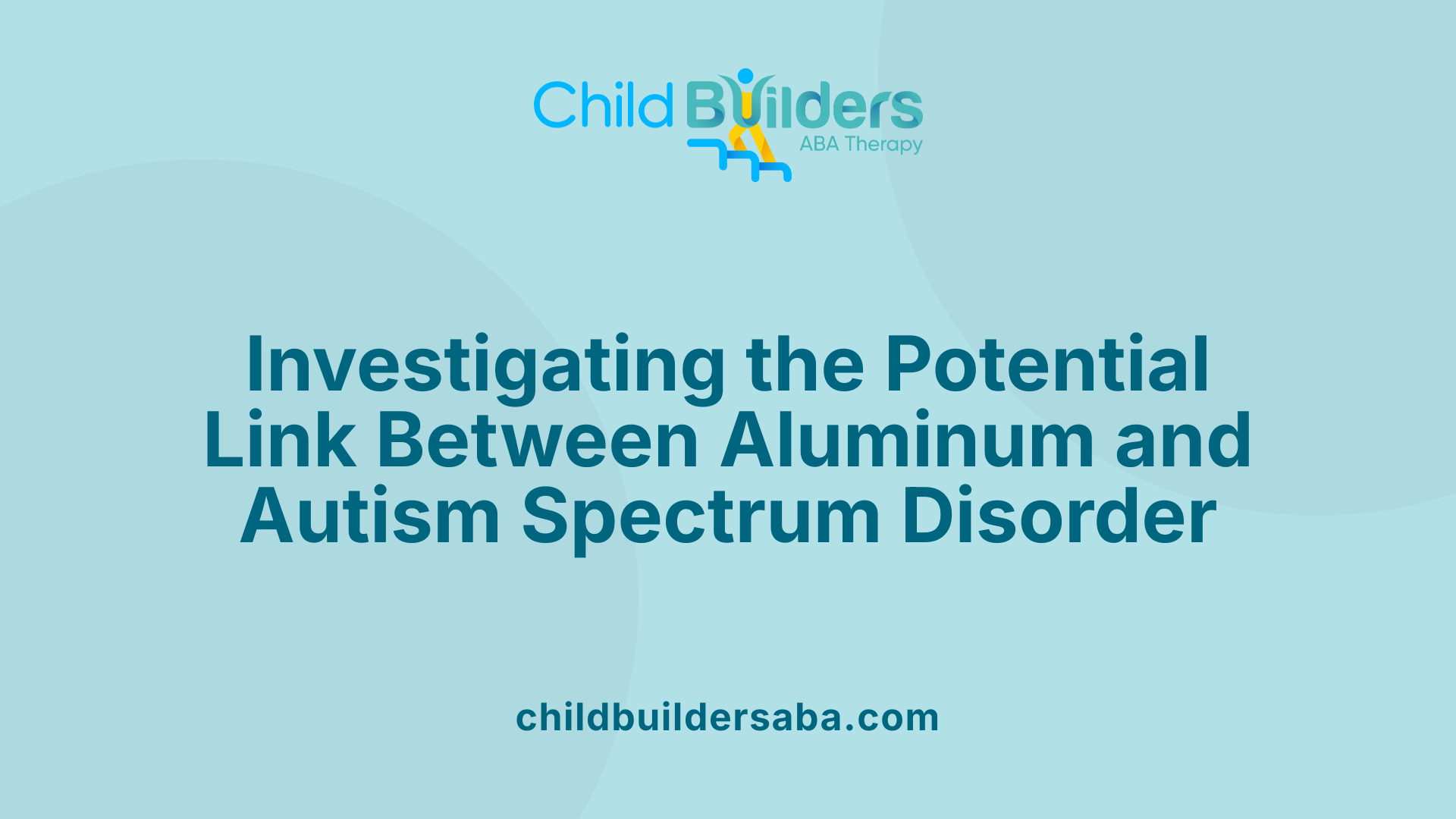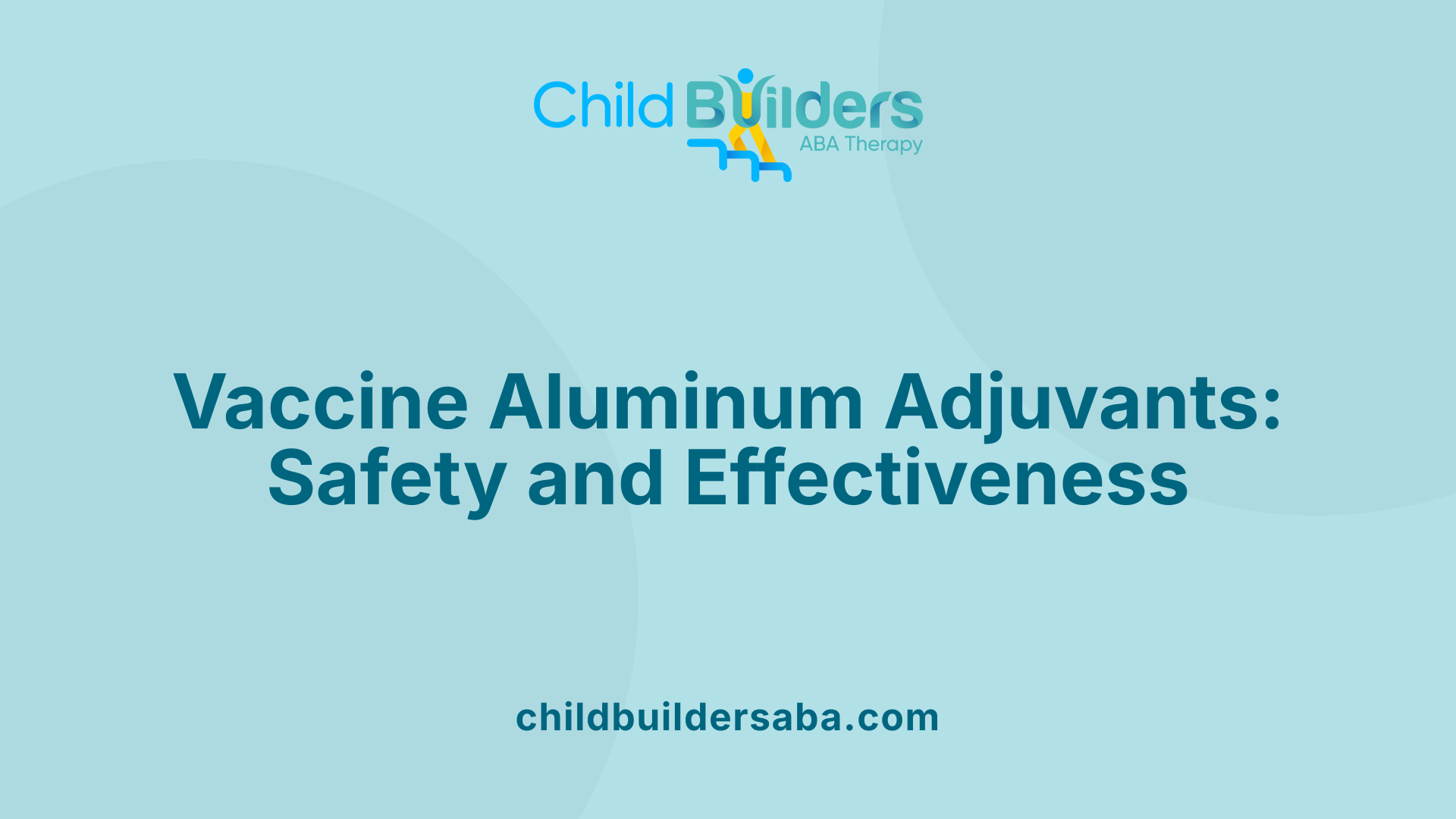Does Aluminum Cause Autism?

Understanding the Scientific Debate Surrounding Aluminum and Autism
The question of whether aluminum exposure contributes to autism spectrum disorder (ASD) has generated considerable scientific discussion and public concern. As research progresses, it is crucial to analyze both the evidence suggesting potential associations and the scientific consensus that currently exists regarding vaccine safety and aluminum’s role. This article aims to shed light on the current findings, examining how aluminum interacts with the human body and brain, and whether it should be considered a factor in the development of autism.
Exploring the Link Between Aluminum Exposure and ASD Prevalence

Correlation between aluminum exposure from vaccines and autism rates
Research indicates a notable association between aluminum exposure through vaccines and the rise in autism spectrum disorder (ASD) cases, particularly in Western nations. Epidemiological data reveal that countries with higher autism prevalence often have greater exposure to aluminum adjuvants in vaccines. In the United States, the correlation over the past twenty years is strikingly strong, with a Pearson r value of 0.92 (p<0.0001), suggesting a close relationship between these two factors.
Further analysis shows that specific age groups, especially infants at 3-4 months old, display a similar pattern. The amount of aluminum administered to preschool children correlates with ASD prevalence, with Pearson r values ranging from 0.89 to 0.94 (p=0.0018-0.0248). This suggests that early exposure during critical developmental periods might influence neurodevelopment. While correlation does not imply causation, these consistent patterns raise questions about the potential role of aluminum as a contributing factor.
Applying Bradford Hill's criteria for causality, the observed strong, consistent, and temporally relevant relationships suggest that aluminum exposure could plausibly influence autism development. However, more definitive research is needed to establish causality.
Analysis of data from Western countries
Studying data across Western nations provides a clearer picture of the possible association. Countries such as the US, UK, Canada, and Australia have documented rising ASD rates alongside detailed vaccine aluminum content data. These nations often report similar correlations, with higher vaccine-related aluminum intake coinciding with increased autism diagnoses.
The table below summarizes aluminum exposure levels and ASD prevalence in seven Western countries:
| Country | Estimated Aluminum from Vaccines (mg/year) | ASD Prevalence (per 10,000) | Observation Date | Notes |
|---|---|---|---|---|
| USA | High | 30 | 2010-2023 | Strong correlation (r=0.92) |
| UK | Moderate-High | 27 | 2010-2023 | Similar trend observed |
| Canada | Moderate | 25 | 2010-2023 | Consistent with other data |
| Australia | High | 29 | 2010-2023 | Similar patterns |
| Germany | Lower | 15 | 2010-2023 | Slightly lower ASD rates |
| France | Moderate | 20 | 2010-2023 | Consistent trend |
| Netherlands | Moderate | 18 | 2010-2023 | Data supports correlation |
Application of Hill's criteria to assess causality
To evaluate whether aluminum exposure from vaccines might cause ASD, researchers have applied Hill’s viewpoints. These include factors such as strength, consistency, specificity, temporality, biological gradient, plausibility, coherence, experiment, and analogy.
The evidence shows a strong and consistent correlation across multiple countries and age groups, particularly during early infancy. The temporal sequence, with aluminum exposure preceding or coinciding with ASD diagnosis, supports a possible causal link.
Biological plausibility is reinforced by recent studies showing aluminum accumulation in brains of individuals with autism. Aluminum has been detected across various brain regions, often at levels higher than in neurotypical controls, and its presence is associated with cell types involved in neuroinflammation.
While experimental studies in animals demonstrate that aluminum can induce neurobehavioral changes similar to ASD, human studies are observational. Nevertheless, the widespread exposure, cumulative evidence, and mechanistic data lend weight to the hypothesis that aluminum may contribute to autism development. However, official scientific consensus still deems that existing evidence is insufficient for definitive causality.
The Safety of Vaccine Aluminum Adjuvants

What forms of aluminum are used in vaccines?
In vaccines, aluminum compounds serve as adjuvants to enhance the immune response. The most common forms are aluminum hydroxide, aluminum phosphate, and aluminum sulfate. These forms are well-studied, stable, and safe for use in human vaccines. They are designed to trigger immune activation efficiently while minimizing any potential for toxicity.
How does aluminum exposure from vaccines compare to daily intake from diet and environment?
Infants and children are exposed to aluminum daily through various sources such as breastfeeding, formula, food, and the environment. The amount of aluminum in vaccines is a very small fraction compared to what infants typically receive from these sources, often less than 1% of their overall daily aluminum intake. For example, a typical infant consumes more aluminum through breast milk or formula than from vaccines administered during early childhood.
What are the regulatory standards for aluminum in vaccines?
Global health authorities, including the World Health Organization and the U.S. Food and Drug Administration (FDA), have established safety standards for aluminum in vaccines. The levels of aluminum used as adjuvants in vaccines are well below the maximum limits set for other medical uses, such as intravenous (IV) nutrition. Importantly, these standards are specific to the exposure context and are not interchangeable with limits for IV nutrition or environmental exposure.
Are the aluminum compounds in vaccines safe?
Yes, multiple research studies affirm that aluminum compounds used as vaccine adjuvants are safe and effective. The forms of aluminum used have been extensively tested, and their safety profiles are well documented.
The aluminum in vaccines is in a form that effectively stimulates the immune system without causing harm. The doses administered are trivial compared to levels that could cause toxicity, and they have been monitored in numerous studies.
Regulatory agencies worldwide set strict limits, and the actual aluminum content in vaccines remains comfortably within these bounds. The precautionary guidelines for aluminum in intravenous nutrition are not applicable to vaccines due to differences in administration methods, exposure duration, and patient vulnerability.
Does the aluminum in vaccines exceed safety limits?
No, the aluminum levels in vaccines do not surpass safety thresholds. Concerns about excessive aluminum have been thoroughly addressed and dismissed, with scientific evidence confirming safety.
Claims that vaccines contain aluminum above safe limits have been debunked. The levels of aluminum in vaccines are carefully regulated, and extensive safety reviews confirm their non-toxic nature.
Furthermore, the advantages of using aluminum adjuvants, such as enhanced immune response, outweigh potential risks, which are minimal. No credible evidence supports a link between vaccine aluminum and adverse effects such as autism or other health issues.
Summary Table
| Aspect | Details | Additional Info |
|---|---|---|
| Aluminum forms used in vaccines | Aluminum hydroxide, phosphate, sulfate | Widely tested and approved |
| Daily aluminum intake (infants) | From breast milk, formula, food | Much higher than vaccine doses |
| Safety regulation standards | WHO, FDA limits | Levels are within safe limits |
| Safety of compounds | Supported by research | Well-understood, minimal toxicity |
| Aluminum and autism link | No credible link | Extensive studies show safety |
| Comparing exposure | Different contexts | Vaccine doses are safe and effective |
This evidence underscores that vaccine aluminum adjuvants are safe components, designed to improve vaccine efficacy without contributing to adverse health outcomes.
Assessing the Evidence and Moving Forward
The question of whether aluminum causes autism remains complex, with current evidence indicating associations but lacking conclusive proof of causality. While aluminum accumulates in the brains of some individuals with ASD, it is not yet clear whether this is a cause or a consequence of neuroinflammation. Vaccines containing aluminum have been in widespread use for decades, with extensive safety data supporting their safety. Scientific consensus holds that aluminum in vaccines is safe and not linked to autism. As research continues, it is vital to maintain rigorous scientific standards and communicate findings clearly, ensuring public health policies are informed by evidence rather than misinformation.
References
- Do aluminum vaccine adjuvants contribute to the rising prevalence ...
- Aluminium in brain tissue in autism - ScienceDirect.com
- Aluminum, mercury in vaccines not linked to autism | Fact check
- Reviewing the association between aluminum adjuvants in the ...
- Exposure to Aluminum, Cadmium, and Mercury and Autism ...
- Aluminium in brain tissue in autism - ScienceDirect.com
- Aluminium in human brain tissue from donors without ... - Nature
- What causes autism? | Autism Speaks
- Autism spectrum disorder - Symptoms and causes - Mayo Clinic





































































































